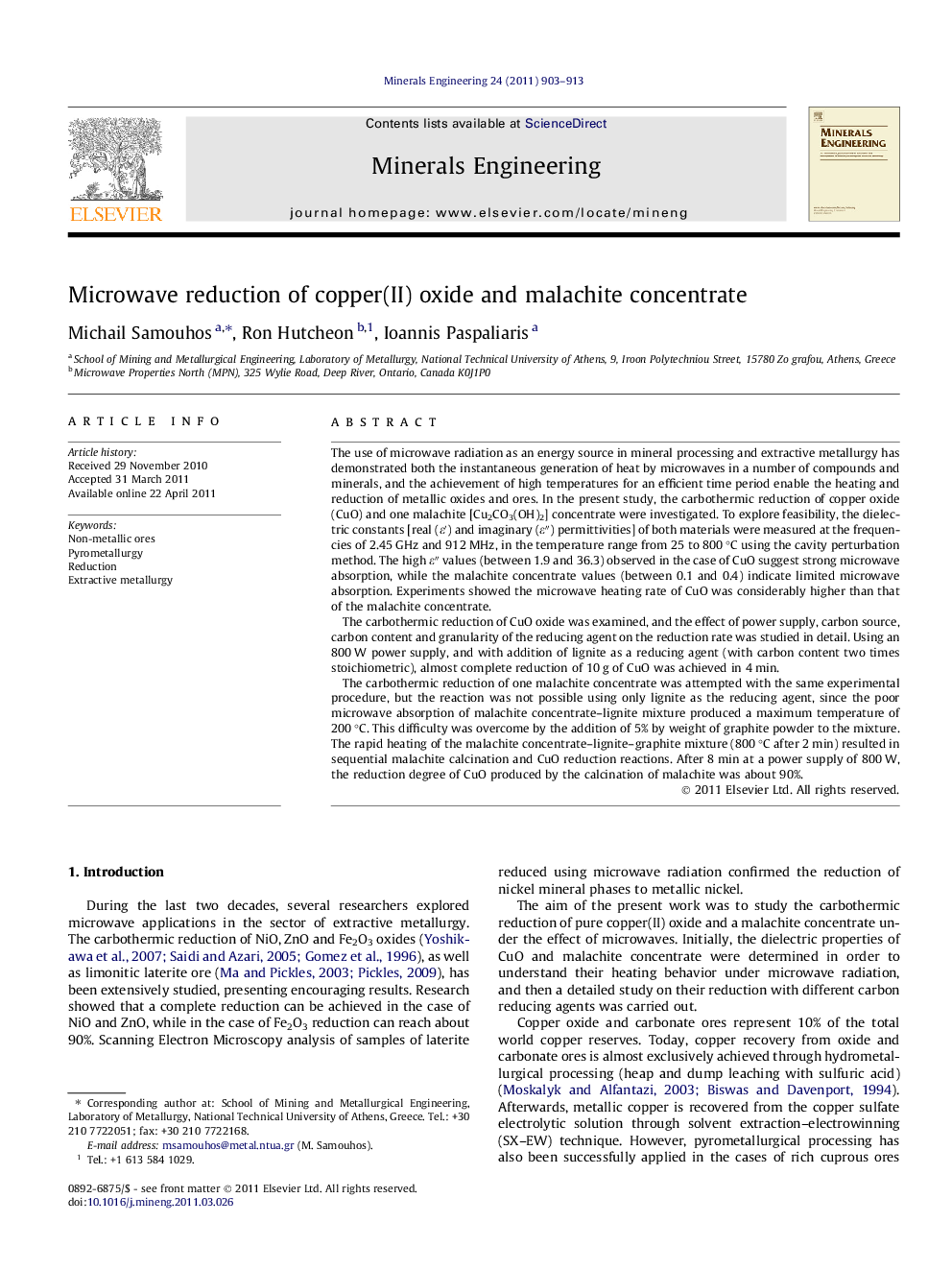| کد مقاله | کد نشریه | سال انتشار | مقاله انگلیسی | نسخه تمام متن |
|---|---|---|---|---|
| 233763 | 465362 | 2011 | 11 صفحه PDF | دانلود رایگان |

The use of microwave radiation as an energy source in mineral processing and extractive metallurgy has demonstrated both the instantaneous generation of heat by microwaves in a number of compounds and minerals, and the achievement of high temperatures for an efficient time period enable the heating and reduction of metallic oxides and ores. In the present study, the carbothermic reduction of copper oxide (CuO) and one malachite [Cu2CO3(OH)2] concentrate were investigated. To explore feasibility, the dielectric constants [real (ε′) and imaginary (ε″) permittivities] of both materials were measured at the frequencies of 2.45 GHz and 912 MHz, in the temperature range from 25 to 800 °C using the cavity perturbation method. The high ε″ values (between 1.9 and 36.3) observed in the case of CuO suggest strong microwave absorption, while the malachite concentrate values (between 0.1 and 0.4) indicate limited microwave absorption. Experiments showed the microwave heating rate of CuO was considerably higher than that of the malachite concentrate.The carbothermic reduction of CuO oxide was examined, and the effect of power supply, carbon source, carbon content and granularity of the reducing agent on the reduction rate was studied in detail. Using an 800 W power supply, and with addition of lignite as a reducing agent (with carbon content two times stoichiometric), almost complete reduction of 10 g of CuO was achieved in 4 min.The carbothermic reduction of one malachite concentrate was attempted with the same experimental procedure, but the reaction was not possible using only lignite as the reducing agent, since the poor microwave absorption of malachite concentrate–lignite mixture produced a maximum temperature of 200 °C. This difficulty was overcome by the addition of 5% by weight of graphite powder to the mixture. The rapid heating of the malachite concentrate–lignite–graphite mixture (800 °C after 2 min) resulted in sequential malachite calcination and CuO reduction reactions. After 8 min at a power supply of 800 W, the reduction degree of CuO produced by the calcination of malachite was about 90%.
► Microwave reduction of CuO and one malachite concentrate.
► Measurement of real and imaginary permittivity (ε′, ε″) of both materials.
► CuO is an excellent microwave absorber heated to 900 °C.
► Almost a complete carbothermic reduction of CuO can be achieved.
► A 95% reduction degree of malachite achieved using lignite/graphite as reducing agent.
Journal: Minerals Engineering - Volume 24, Issue 8, July 2011, Pages 903–913